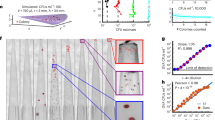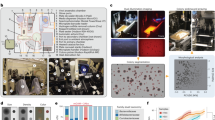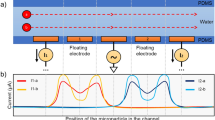Abstract
FORREST1 and other workers have shown that interesting data regarding bacterial metabolism can be obtained by microcalorimetry of growing cultures. In our investigations into the use of microcalorimetry as a means of differentiating one microbial species from another, we have obtained characteristic profiles for different members of the family Enterobacteriaceae by observing the heat produced during their growth in liquid media. The microcalorimeter (Instrumentation Laboratory, Inc.) used is of an experimental design operating at 37° C and having a response time of approximately 10 min. The long term baseline stability is 2% full scale or 0.8 µcal s−1 ml.−1 over a 14 h measuring period. The profiles are recorded on a conventional 10 inch strip chart recorder with a paper feed of 1 inch h−1. The inocula for the temperature equilibrated test vessel consisted of approximately 500 cells obtained by dilution of a logarithmically growing broth culture.
This is a preview of subscription content, access via your institution
Access options
Subscribe to this journal
Receive 51 print issues and online access
$199.00 per year
only $3.90 per issue
Buy this article
- Purchase on Springer Link
- Instant access to full article PDF
Prices may be subject to local taxes which are calculated during checkout
Similar content being viewed by others
References
Forrest, W. W., Microcalorimetry in Methods in Microbiology (edit. by Norris, J. R., and Ribbons, D. W.), 6 B, 285 (Academic Press, 1972).
Author information
Authors and Affiliations
Rights and permissions
About this article
Cite this article
BOLING, E., BLANCHARD, G. & RUSSELL, W. Bacterial Identification by Microcalorimetry. Nature 241, 472–473 (1973). https://doi.org/10.1038/241472a0
Received:
Revised:
Issue Date:
DOI: https://doi.org/10.1038/241472a0
Comments
By submitting a comment you agree to abide by our Terms and Community Guidelines. If you find something abusive or that does not comply with our terms or guidelines please flag it as inappropriate.



